Earth's Surface
The Earth's surface is the outermost layer of the planet where all life exists. It is made up of land, water, and the atmosphere. The study of the Earth's surface involves understanding its features, such as mountains, valleys, oceans, and continents, and the processes that shape them.
Layers of the Earth's Surface
The Earth's surface can be divided into three main layers:
- Lithosphere: This is the solid outer layer of the Earth, which includes the crust and the upper part of the mantle. It is divided into tectonic plates that float on the semi-fluid asthenosphere.
- Hydrosphere: This layer includes all the water on the Earth's surface, such as oceans, rivers, lakes, and glaciers.
- Atmosphere: The layer of gases that surrounds the Earth, providing the air we breathe and influencing the weather and climate.
Processes Shaping the Earth's Surface
The Earth's surface is constantly changing due to various processes, including:
- Erosion: The wearing away of the Earth's surface by water, wind, and ice.
- Weathering: The breaking down of rocks and minerals on the Earth's surface.
- Plate Tectonics: The movement of the Earth's lithosphere due to the interactions of tectonic plates, leading to the formation of mountains, earthquakes, and volcanoes.
- Deposition: The process by which sediments, soil, and rocks are added to the Earth's surface.
Study Tips
To understand the Earth's surface better, consider the following study tips:
- Use maps and globes to identify and locate different features of the Earth's surface, such as mountains, rivers, and continents.
- Observe the changes in the Earth's surface caused by natural processes, such as erosion and weathering, in your local environment.
- Explore the impact of human activities on the Earth's surface, such as deforestation, urbanization, and pollution.
- Learn about the different layers of the Earth's surface and how they interact with each other to support life on the planet.
[Earth's Surface] Related Worksheets and Study Guides:
.◂Science Worksheets and Study Guides Third Grade. Weather
Study Guide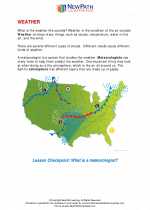 Weather
Weather  Worksheet/Answer key
Worksheet/Answer key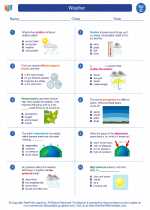 Weather
Weather  Worksheet/Answer key
Worksheet/Answer key Weather
Weather  Worksheet/Answer key
Worksheet/Answer key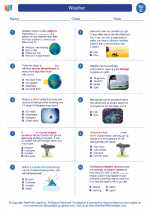 Weather
Weather  Vocabulary/Answer key
Vocabulary/Answer key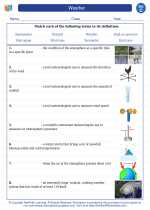 Weather
Weather  Vocabulary/Answer key
Vocabulary/Answer key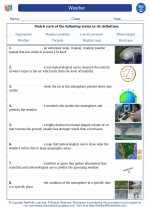 Weather
Weather 

 Worksheet/Answer key
Worksheet/Answer key
 Worksheet/Answer key
Worksheet/Answer key
 Worksheet/Answer key
Worksheet/Answer key
 Vocabulary/Answer key
Vocabulary/Answer key
 Vocabulary/Answer key
Vocabulary/Answer key

The resources above cover the following skills:
EARTH AND SPACE SCIENCE (NGSS)
Earth’s Systems
Students who demonstrate understanding can:
Represent data in tables and graphical displays to describe typical weather conditions expected during a particular season.